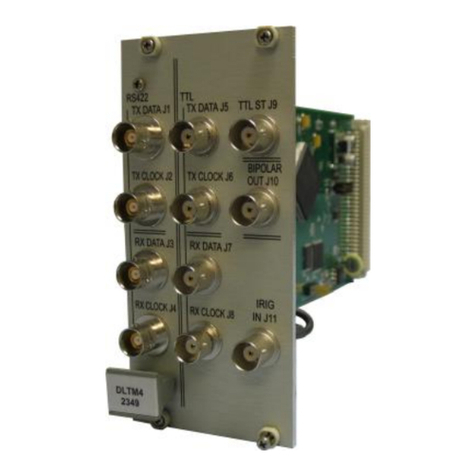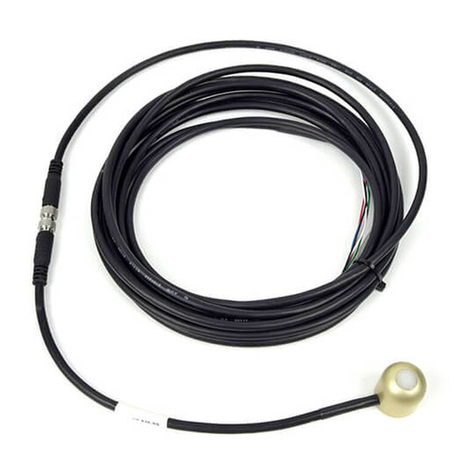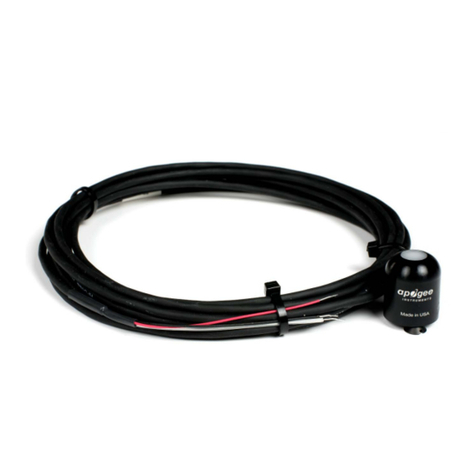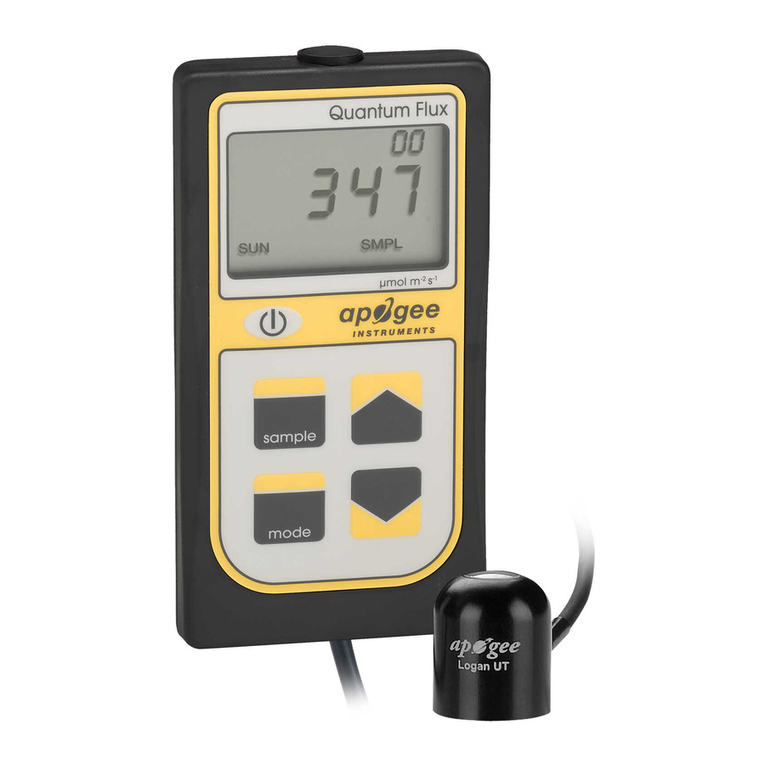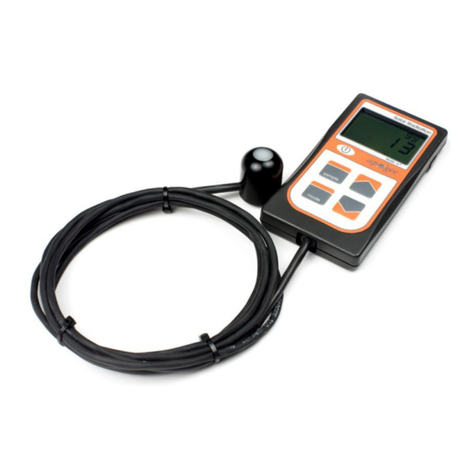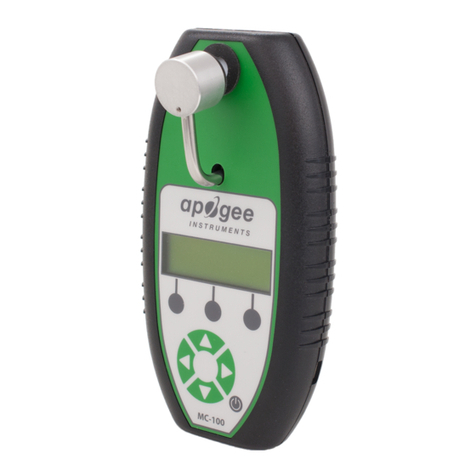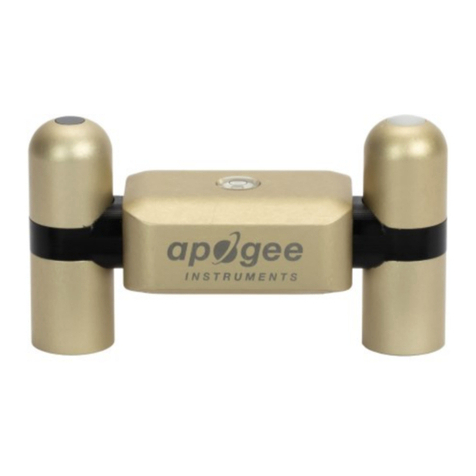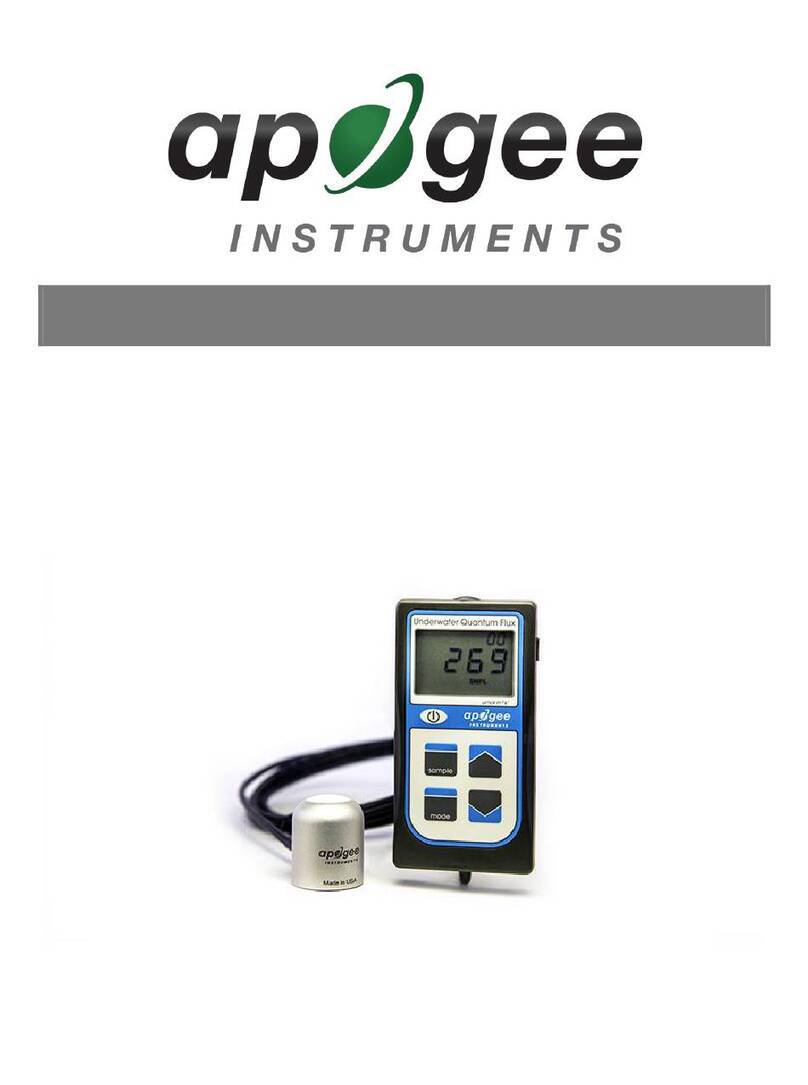
10
for the selected mode. That is, performing a reset when in SMPL mode will only erase the manual measurements and
performing a reset when in LOG mode will only erase the automatic measurements.
Review/Download Data: Each of the logged measurements in either SMPL or LOG mode can be reviewed on the LCD
display by pressing the up/down buttons. To exit and return to the real-time readings, press the sample button. Note that the
average daily values are not accessible through the LCD and can only be viewed by downloading to a computer.
Downloading the stored measurements will require the AC-100 communication cable and software (sold separately). The
meter outputs data using the UART protocol and requires the AC-100 to convert from UART to USB, so standard USB cables
will not work. Set up instructions and software can be downloaded from the Apogee website
(http://www.apogeeinstruments.com/ac-100-communcation-cable/).
Sensor Calibration
Apogee MI series infrared temperature meters are calibrated in a temperature controlled chamber that houses a custom-built
blackbody cone (target) for the radiation source. During calibration, infrared radiometers (detectors) are held in a fixture at
the opening of the blackbody cone, but are thermally insulated from the cone. Detector and target temperature are
controlled independently. At each calibration set point, detectors are held at a constant temperature while the blackbody
cone is controlled at temperatures below (12 C), above (18 C), and equal to the detector temperature. The range of detector
temperatures is -15 C to 45 C (set points at 10 C increments). Data are collected at each detector temperature set point, after
detectors and target reach constant temperatures.
Emissivity Correction
Appropriate correction for surface emissivity is required for accurate surface temperature measurements. The simple (and
commonly made) emissivity correction, dividing measured temperature by surface emissivity, is incorrect because it does not
account for reflected infrared radiation.
The radiation detected by an infrared radiometer includes two components: 1. radiation directly emitted by the target
surface, and 2. reflected radiation from the background. The second component is often neglected. The magnitude of the
two components in the total radiation detected by the radiometer is estimated using the emissivity (ε) and reflectivity (1 - ε)
of the target surface:
( )
Backgroundet
argTSensor
E1
E
E⋅ε
−+⋅
ε=
(1)
where ESensor is radiance [W m-2 sr-1] detected by the radiometer, ETarget is radiance [W m-2 sr-1] emitted by the target surface,
EBackground is radiance [W m-2 sr-1] emitted by the background (when the target surface is outdoors the background is generally
the sky), and ε is the ratio of non-blackbody radiation emission (actual radiation emission) to blackbody radiation emission at
the same temperature (theoretical maximum for radiation emission). Unless the target surface is a blackbody (ε = 1; emits
and absorbs the theoretical maximum amount of energy based on temperature), Esensor will include a fraction (1 – ε) of
reflected radiation from the background.
Since temperature, rather than energy, is the desired quantity, Eq. (1) can be written in terms of temperature using the
Stefan-Boltzmann Law, E = σT4(relates energy being emitted by an object to the fourth power of its absolute temperature):




